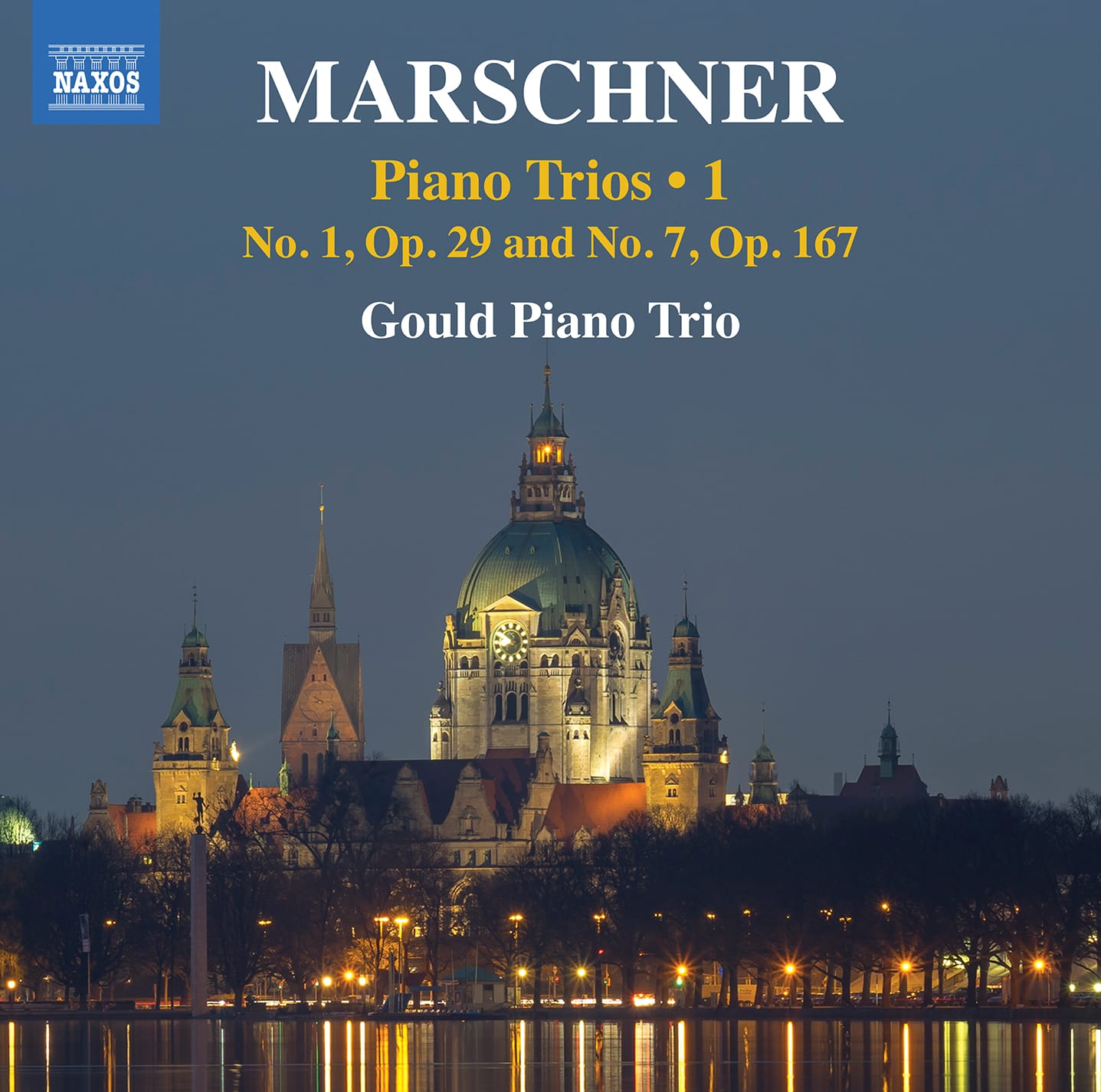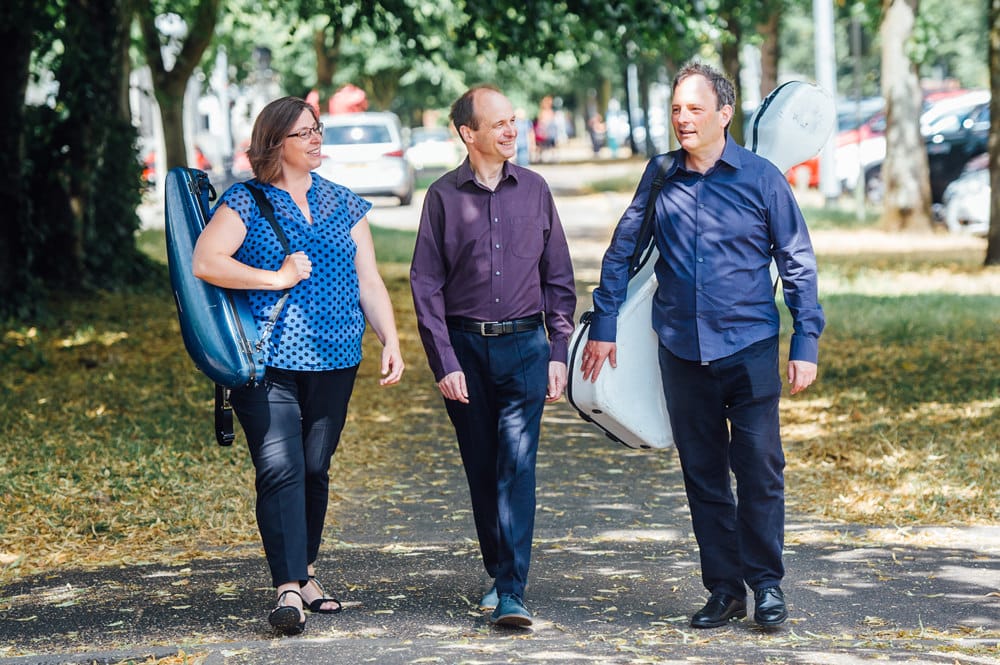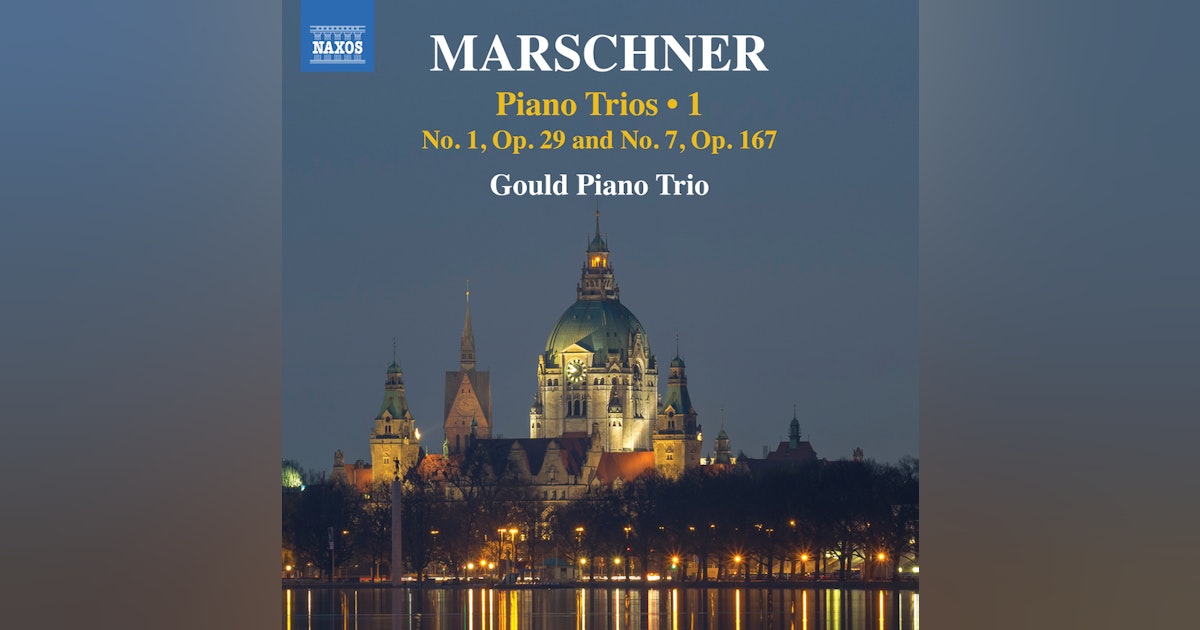Marschner: Piano Trios, Volume 1
A most rewarding disc

Best known for his opera Der Vampyr (he was a leading composer in the period between Weber and Wagner), Heinrich August Marschner (1795-1861) was well travelled throughout Europe before he arrived in Dresden by become conductor at the Municipal Theatre there.
But here we have the chamber side of Marschne's output: apparently Robert and Clara Schumann admired his piano trios, and, on the evidence of this disc, with good reason. There are seven in total, and here we have Nos. 1 and 7, in the safe hands of the Goulf Piano Trio.
The Gould Piano Trio's career was launched in a win at the Melbourne International Chamber Music Competition. The ensemble became the European Concert Hall Organisation's ‘Rising Stars’, making a highly successful and critically acclaimed debut at New York’s Weill Recital Hall. Its many appearances at London’s Wigmore Hall have included the complete pian, trios of Dvořák, Mendelssohn, Schubert and Beethoven

The dark of the first movement of the A-Minor Two (No. 1, Op. 29, published 1823) is the epitome of mid-Romanticism. It is also full of lovely contrasts and it is hard to imagine a finer performance than this. The three players of the Gould Trio (Lucy Gould, violin; Richard Lester, cello; Benjamin Frith, piano) play with real assurance, but also impart a spark that is reminiscent of live performance (this is in fact a studio recording from Wyastone Concert Hall, Monmouth, put down in November 2023). Gould's high register is miraculously sweet, dialogue between violin and cello is a delight, and Frith's piano playing alternately glowers and sparkles. What a joy for all lovers of Romanticism this is - click below and you'll be hooked. Frith's technique is superlative (this is no easy piano part) and just listen to the concerted diminuendo that closes the movement out:
The Gould Piano Trio seem to hit tempi straight on the head. The 'moderato' modifier of the first movement is perfectly judged, allowing space for the drama and lyricicsm; the second movement is an Andante con expressione (Lester's cello beautifully expressive in its spotlit moments); the Trio allow momentum, a lovely sense of flow, while honing the dramatic elements, Marschner includes some harmonic progressions that sound, if not unique, certainly notable, and I wonder if they are part of his broader style?:
.I agree with Sam Girling in his booklet notes that the influence of Mendelssohn is clear in the Scherzo (Allegro molto); Frith's articulation is a little miracle here, a joy to experience. And what a lovely contrasting Trio, its promises of a lullaby repeatedly shelved:
Fith's passagework spaces again in the finale (no modifier here, just “Vivace,” and it is certainly lively!). How even are Frith's arpeggiations; how sweet Gould's violin sings; how eloquent Lester's cello. and together, they offer the quintessence of chamber music.
The Seventh Trio (F-Major, Op. 167) was published in 1855, some 32 years later. Maschner's mode of expression is fascinating in that just who you think he's establishing a mood, he disturbs it and leads you in another (often more turbulent) direction: as is the case in the Allegro giusto, the first movement. But hear the piece out: its scoring is more sophisticated than Op. 29's, and the emotional remit of the first movement is large indeed. Some might even call it daring! Certainly the Gould Piano Trio persuades me, at least, that it is so:
If Marschner did Schubert, he'd do it like the second movement of Op. 167. There its something markedly Schubertian about the piano writing in this movement, tweaked towards the Marschner side of the fence with some of the harmonic twists. Tate's opening piano solo is deliciously rendered by Frith; the lioness's share of this Andantino goes to the violin, though, and Lucy Gould ensures her instrument sings like an opera singer. The cello get to sing, too, Lester in fine “voice” against beautifully staccato chords from Frith. Once more, the Gould Piano Trio nails the tempo indication: “Andantino, quasi Allegretto gracioso”. And, goodness, it is gracious:
In contrast, the Scherzo is marked just “Presto”. I love the opening of this: the piano's gestures are separated by (decreasing amount of) silence before a helter-skelter moto perpetuo is set in motion, delivered evenly and with.real sense of mystery here. It sounds a bit like a cross between Mendelssohn and Schumann to my ears. There are some very characterful slithering gestures that punctuate the fabric, delivered with real character by the Gould Trio:
Sharp juxtaposition forms the basis of the finale. Marked simply “Vivace,” it is cully a lot more complicated than that: drama and lyricism stand side-by-side, sometimes on a large-scale level, sometimes in short blocks:
A most rewarding disc, offering a different side of a composer who, if you know him at all, it was via opera.
There is a disc also of Marschner Trios Nos. 2 and 5 on cpo performed by the Ravensburg Piano Trio which, it is a fair bet, will be the subject of a future post.
This release is available at Naxos here. Streaming below:


